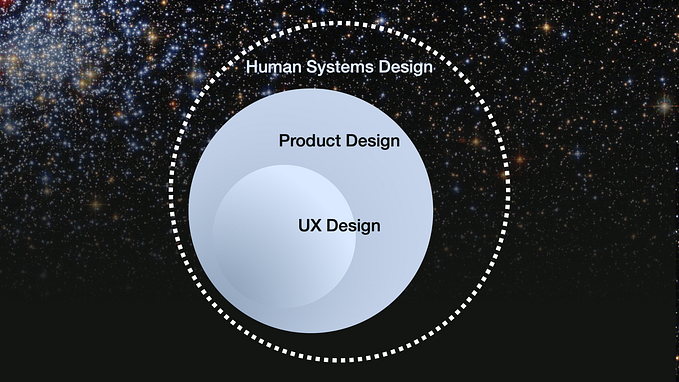Understanding the user’s motivations and reward systems
Motivation is why someone wants to do something. Motivation is what arouses and sustains action toward a desired goal. It gives purpose and direction to behavior. Motivation can be in any form like reward, recognition, satisfaction, pleasure, etc...
Motivations are the drivers behind setting and pursuing goals. Goals are 2 types Extrinsic and Intrinsic.
Extrinsic goals relate to external influences such as money, fame, status, or anything that requires validation from others.
Intrinsic goals relate to yourself; your personal growth, health, and relationships with yourself and others.
Examples:
- Exercising to impress others (extrinsic)
- Exercising to feel more energized (intrinsic)
- Studying to get a good grade (extrinsic)
- Studying because the topic excites and interests you (intrinsic)
- Starting your own business to become rich (extrinsic)
- Starting your own business because you are passionate about it and want to make a positive change in the world (intrinsic)
- Getting a job promotion because you want to command other people around and make more money (extrinsic)
- Getting a job promotion because you want to help the business and enjoy taking more responsibility (intrinsic)
When you’re designing a reward system, We need to think about what kind of Goal we are setting up whether it is intrinsic or Extrinsic? What type of rewards we are rewarding Intrinsic or Extrinsic?
I’ve read an article explaining research on motivation, Edward L. Deci is a Professor of Psychology and Gowen Professor in the Social Sciences at the University of Rochester, and director of its human motivation program. He is well known in psychology for his theories of intrinsic and extrinsic motivation and basic psychological needs conducted an experiment. He chose the Soma puzzle cube. It is a puzzle that consists of seven plastic pieces. You could assemble the puzzle as you wish and get different objects out of it. The result is always dependent on your imagination.
Deci gathered a bunch of people, male and female, and divided them into two equal groups. During three days of experiments, one hours sessions, he asked people to play with the puzzles. Meanwhile, he was in a room next-door watching through a window.
The trick here was that Group A received no reward for what they did on Day 1, a reward for the extra effort on Day 2 (money), and again no reward on Day 3. Meanwhile, Group B received no rewards on all three days. And what Deci found was that Group B played a little bit longer with the puzzles on Day 3 in comparison with Group A (which received a reward on Day 2).
Deci concluded that:
When money is used as an external reward for some activity, the subjects lose interest in the activity.
Extrinsic Rewards can deliver a short-term boost, a small dosage of dopamine in your head, but it creates a dependency. The same type of boost as a good cup of coffee, whose effect wears off in a couple of hours. And this type of motivation can reduce a person’s longer-term motivation to continue the project.
Take some X fitness app as an example, User starts using this app because he set up his Goal to be fit which is an Intrinsic goal.
The app shows how many calories he burned every day. He is getting motivated with the progress and feedback in the app this is intrinsic.
As the app provides constant feedback on his progress, he is encouraged ( intrinsic ) to take the next step towards better health.
After realizing that the App has not got traction, the App has introduced monetary rewards, for its users. Over a period of time, this is has encouraged users to adopt, use, and get rewarded. Some users pushed their limits to get maximum benefits.
Now that app has gained traction, it stopped the monetary reward ( forget that it innovated on anything else for sake of argument ). This results in a few users reducing the usage of the app.
The reasons to stop using App could be:
- Their motivations got changed from Intrinsic to Extrinsic
- Maybe they started using the app only because of extrinsic rewards.
- May they find another interesting app
Human beings have an inherent tendency to seek out novelty and challenges, to extend and exercise their capacities, to explore, and to learn. One who is interested in developing and enhancing intrinsic motivation should not concentrate on external motivation factors such as monetary rewards (Extrinsic Rewards). The one who is interested in intrinsic motivation will not concentrate on extrinsic rewards.

Take a traveler as an example, His goal is to visit new places and meet new people. Though it is adventurous and risky he will do that, because the experience from the last trip is his motivation. Here his motivation is Intrinsic, he is doing it for himself no one is rewarding for his traveling. He won’t stop traveling if someone tells him to stop traveling Until he felt like stopping.
When you have constant opportunities to try different strategies and get feedback, you get more frequent and more intense bursts of dopamine. Not only do you get that pleasure, but your mindset changes in the long term. Your brain starts looking at things that weren’t achievable before and starts to think they might be achievable with a little more effort. It expects to learn, improve and succeed because that’s what it’s used to doing.






